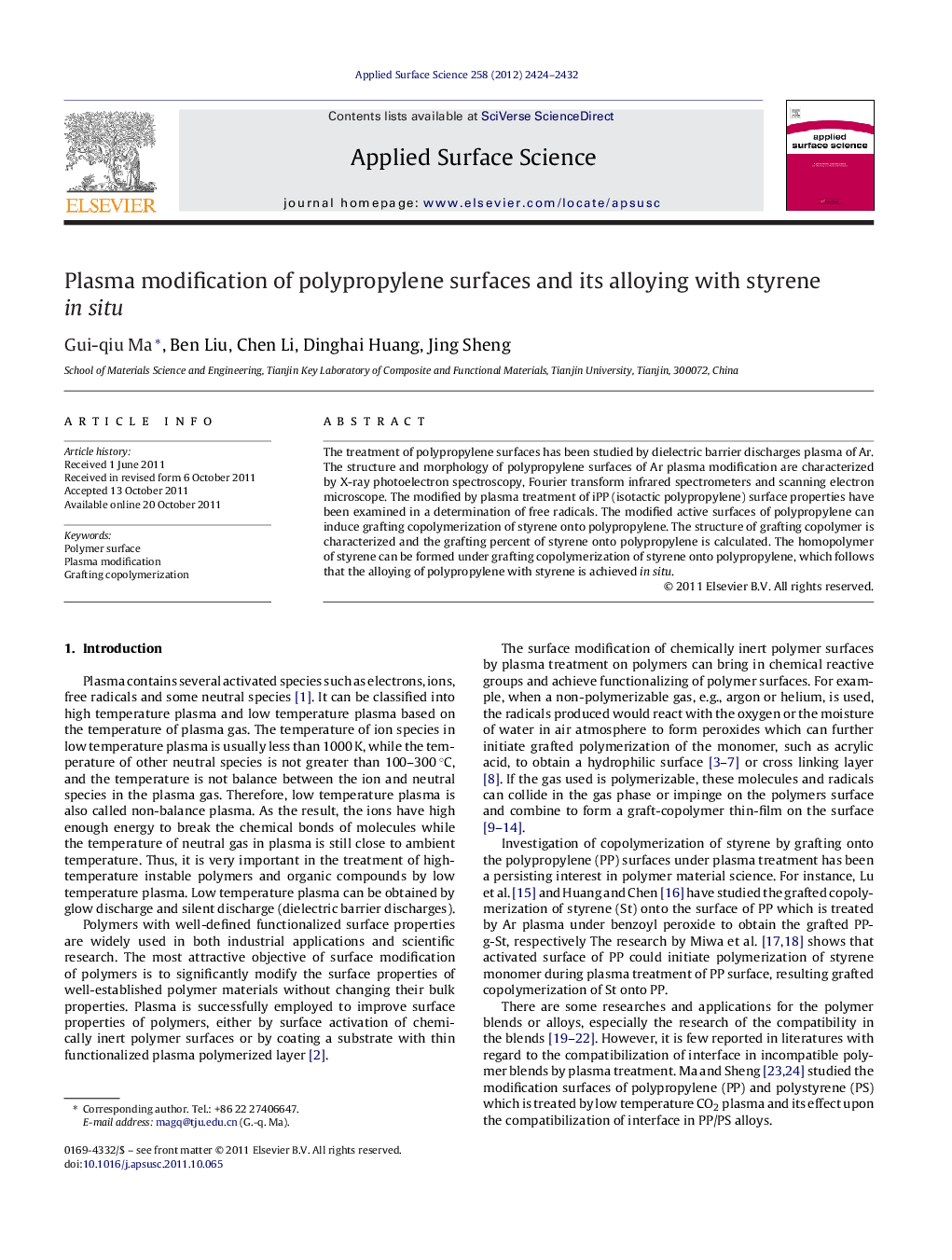| کد مقاله | کد نشریه | سال انتشار | مقاله انگلیسی | نسخه تمام متن |
|---|---|---|---|---|
| 5366489 | 1388350 | 2012 | 9 صفحه PDF | دانلود رایگان |

The treatment of polypropylene surfaces has been studied by dielectric barrier discharges plasma of Ar. The structure and morphology of polypropylene surfaces of Ar plasma modification are characterized by X-ray photoelectron spectroscopy, Fourier transform infrared spectrometers and scanning electron microscope. The modified by plasma treatment of iPP (isotactic polypropylene) surface properties have been examined in a determination of free radicals. The modified active surfaces of polypropylene can induce grafting copolymerization of styrene onto polypropylene. The structure of grafting copolymer is characterized and the grafting percent of styrene onto polypropylene is calculated. The homopolymer of styrene can be formed under grafting copolymerization of styrene onto polypropylene, which follows that the alloying of polypropylene with styrene is achieved in situ.
Highlights⺠Plasma processing can etch the surface of polymer and produce active free radical. ⺠The active free radical can induce monomer grafting polymerization without initiator and catalysts. ⺠The homopolymer of styrene can be formed under grafting copolymerization of styrene onto polypropylene, it follows that the alloying of polypropylene with styrene is achieved in situ.
Journal: Applied Surface Science - Volume 258, Issue 7, 15 January 2012, Pages 2424-2432